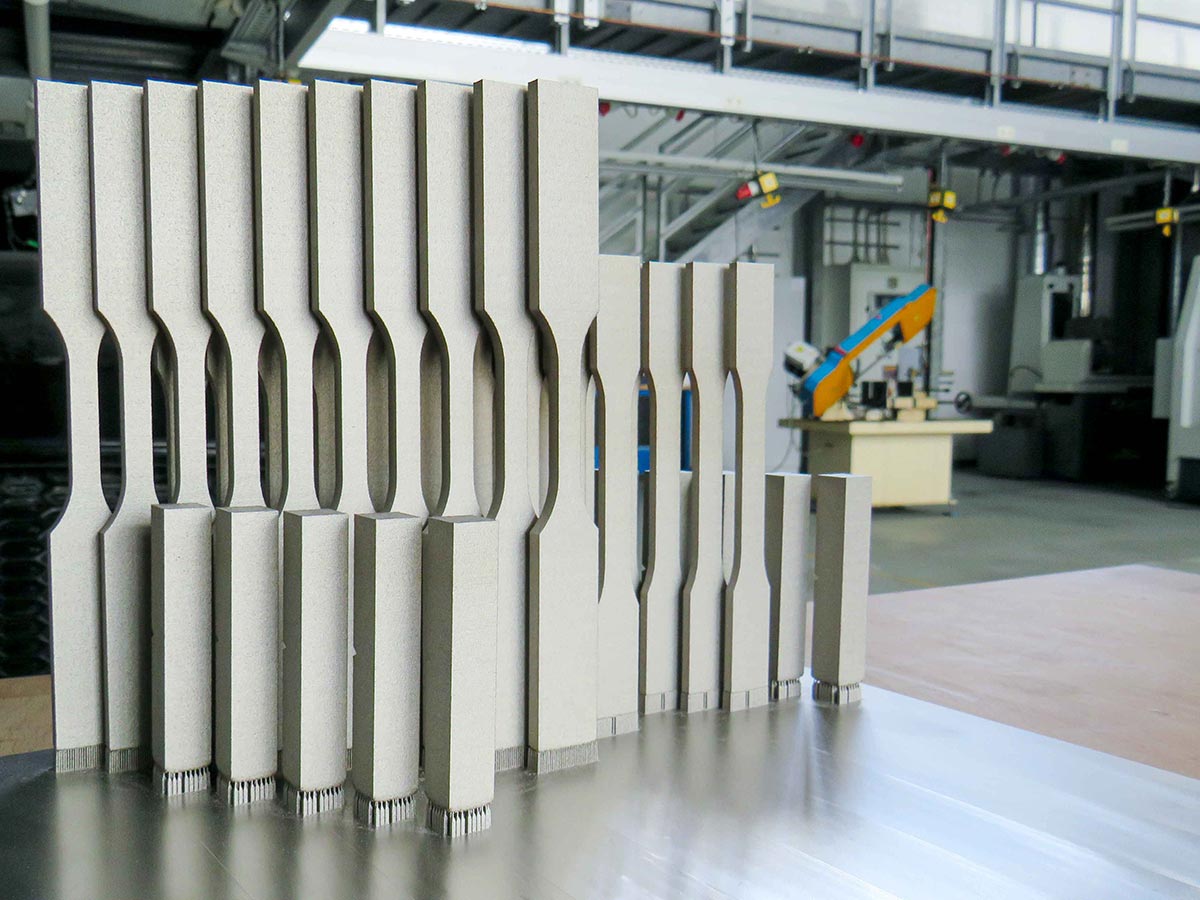Additive Manufacturing
In recent decades, additive manufacturing (AM, additive manufacturing or colloquially 3D printing) is gaining more and more importance and is finding its way into more and more different industries. Why is this so?
The reason for this is that there are many applications that have been developed using conventional (subtractive) manufacturing. Additive manufacturing, however, creates potential here again to create added value, to become even more efficient. This cannot be generalized and say that additive manufacturing is the right way to achieve the goal in every application. However, in certain cases, manufacturing can be significantly more material-efficient, since a material build-up takes place. It is not, as in conventional manufacturing (turning, milling …), removing so much from a block of material until one component remains. Only that component can be directly built up as it should be. No matter if it is plastics, resins or metals.
Furthermore, there are completely new design possibilities and degrees of freedom when designing/developing components. This also creates the possibility of making components more efficient. Bionics and topology optimization are major topics here in relation to additive manufacturing. You can look at many mature principles in nature and emulate them. Topology optimization makes it possible to optimize components precisely for their intended purpose. This means that a component with the same requirements can be produced much more easily through these design options.
By definition, additive manufacturing is a manufacturing method in which material is added (built up). This is in contrast to conventional manufacturing methods such as milling or turning, which work subtractive (subtract). Generally, additive manufacturing is also colloquially referred to as 3D printing. Most of the manufacturing methods are based on the principle of planar layering. So, the model to be manufactured is divided into slices and it is built layer by layer. The 3D printer brings energy into the material to be formed in order to be able to map the respective layer. This may be the filament melting in the FFF process or the laser beam that melts the metal powder in the SLM process.
OVERVIEW ADDITIVE MANUFACTURING PROCESSES
| Procedure | Common abbreviations | Base | Materials | Costs |
|---|---|---|---|---|
| Fused Filament Fabrication | FFF, FDM, FLM | Filaments | Plastics (ABS, ASA, PLA, PETG…) | from 150€ |
| Selective Laser Melting | SLM, LBMF | Metal powder | Metals (stainless steels, tool steels, titanium alloys, aluminium …) | from 100.000€ |
| Selective Laser Sintering | SLS | Plastic powder | Plastics (PA11, PA12, TPU…) | from 10.000€ |
| Steriolitography | SLA | Liquid resins | Photopolymers | from 2.000€ |
The table shown is only intended to provide a rough overview of the various methods and is not exhaustive. Since additive manufacturing is a rapidly and strongly growing pillar of manufacturing methods, new processes and optimized methods are constantly being added.
Since the aim of the INTERREG project ComPrintMetal3D is to make additive manufacturing processes interesting for small and medium-sized enterprises, those processes were selected with which it is possible to manufacture metal components. 3D printers with a price range of approx. 750 to 500,000€ are used in order to provide SMEs with as good overview of possible investment costs as possible. The various special features will be discussed with the aim of providing companies with a guide to the existing options.
Here you can find information about the selected metal printing methods.

